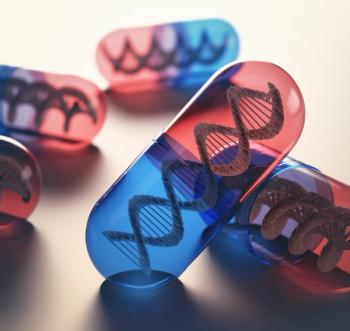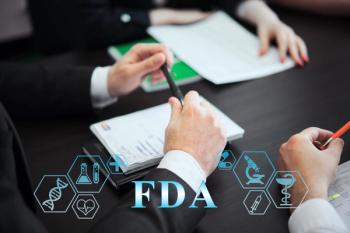
- Pharmaceutical Executive-06-01-2008
- Volume 0
- Issue 0
Stealth Pharmas
Second annual Not Big Pharma audit gives equal time to the little guys. Who's got the Midas touch?
Welcome to Pharm Exec's second annual "Stealth Pharma" audit. Once again, our aim is to learn something about how select—and very diverse—non–Big Pharmas compete vis-à-vis is their Big Pharma peers. If this sounds like a modest, not-definitive goal, that's because it is. Unlike in our annual "Industry Audit" every September, here we aren't quantifying and weighting metrics to rank the top 16 publicly traded pharmas based on performance.
NOT BIG PHARMA
And for good reason. Stealth Pharma is, by definition, an unwieldy grab-bag category because it includes any company that is not a Big Pharma. Firms specializing in biotech, franchises, orphan drugs, and generics are all in play. And when it comes to making comparisons, the diversity of stealth pharmas raises problems way more complex than apples vs. oranges. How do you rank the performance of an orphan drug superstar like Genzyme against that of a solid specialty pharma like Endo? You don't. Just sit back, relax, and enjoy our audit lite.
What the Metrics Mean
In keeping with the spirit of this exercise, we must confess that there was no rhyme or reason to the selection of these particular 12 stealths. Let's just say that this is not—repeat not—a ranking of the top 12 Stealth Pharma money makers. If anything, we chose these 12 because they are newsmakers—familiar names that earn ink more often than their 1,000 or so counterparts.
ENTERPRISE VALUE
Teva, the generics king, and Novo Nordisk, the franchise giant, tower over all other stealths, with 2007 Revenues in the $8 billion–plus range. This is, of course, small change compared to the likes of Pfizer or GlaxoSmithKline, which raked in $48 billion or so last year.
Drill down to the next level of metric, and it gets even more interesting. R&D Spend Per Sales for the Big Pharmas ranges from a high of 27 percent at Biogen Idec to a low of 9 percent at Johnson & Johnson. Five stealths exceed the Big Pharma average of 16 percent, with Celgene, the cancer and immunology specialist, leading the way at 28 percent.
ENTERPRISE VALUE/SALES
Enterprise Value represents the value of a company in terms of what it might sell for. It's calculated as market capitalization (total number of shares outstanding multiplied by the price of the stock that day) plus liabilities minus cash. When EV goes up, shareholder value has been created; when EV goes down, shareholder value is destroyed. As a surrogate for shareholder value, EV is arguably the most crucial performance metric.
Enterprise Value to Sales may be the mother of all metrics. Why? Because EV to Sales adjusts for the influence of scale—it's the normalizer. As noted, Teva and Novo Nordisk are the top two in terms of revenue, so we would expect their EVs to reflect their revenue scale—just as Pfizer's EV tracks its $50 billion in sales. But on the EV/S metric, the generics juggernaut comes in only at number six. While Teva and Novo Nordisk are solid performers, their future sales and profits potential are not viewed with as anywhere near the optimism for future performance as powerhouses Celgene and Gilead.
REVENUES
In a class by themselves, Celgene, the cancer specialist, and Gilead, the infectious disease innovator, have a higher EV/S than even the best of Big Pharma (2006 numbers—last year's audit is not in yet), Genentech and Biogen Idec.
Despite King Pharmaceutical's impressive showing on a number of metrics, its EV and EV/S are at the bottom of the 12 stealths. For its board, this might raise a question of strategy: whether in-licensing castoff drugs to the general exclusion of in-house R&D is souring investors on its stock. Mylan, which was close to buying King in 2004 before Carl Icahn nixed the $4 billion deal, isn't doing much better, but the generic firm's recent acquisitions of Merck KGAA's generics and Matrix Labs have vaulted it into top-tier competition with Teva and Novartis' Sandoz. Mylan's lackluster EV showing may be explained partly by the view that it paid too much for these shops. As the Wall Street Journal's Robert Cyran and Rob Cox recently reported, Mylan's return on investment (ROI) is likely to be only about 7 percent, compared to its internal weighted average cost of capital (WACC) of 8 percent.
R&D SPEND/SALES
What's WACC? It's a number to watch, now that deal making is leading industry enterprise. WACC reflects the cost a firm incurs in raising capital. It's a weighted combination of debt plus common stock in a firm's capital structure. Mylan's WACC exceeds its ROI, which means the company is currently destroying shareholder value. This is reflected in the market's perspective on the rough road ahead for Mylan.
Grow or die is the law of every industry, and it's measured by Change in Revenue. While growing (generally defined as beating last year's numbers) is good, growing organically—through innovation rather than acquisition or merger—is better. According to IMS, in 2007, Big Pharma grew about 6.4 percent. No big whoop. By comparison, the stealths were on a tear last year (Barr tops our list with 63 percent), with only Cephalon and King missing double digits —or for that matter, even single digits.
CHANGE IN REVENUE
Cephalon, which saw its revenue jump 44 percent in 2006, faces the industry's common dilemma of coming up with new products. Generics are eating into pain drug Actiq's profits, and the biotech is being investigated for signing authorized-generic deals to protect profits of its star: wakefulness drug Provigil. The good news is that Cephalon is entering the oncology market, and its first cancer drug, Treanda, was approved in March; the bad news is that every other drugmaker is also piling into the cancer category.
Allergan, the aesthetics-lifestyle maven, is in the best of all worlds. It competes in a non-Medicare, non-Managed Care market, and its growth and gross margin reflect the Botox booster's nice little niche.
GROSS MARGIN
Gross Margin measures how well a firm prices its products (the higher, the better). Celgene, Gilead, and Allergan can all compete with the big three biotechs of Big Pharma—Genentech, Biogen Idec, and Amgen. In fact, Celgene shows a nose-bleeding markup of over 90 percent based on its multiple myeloma treatment, Revlimid, which costs patients about $50,000 a year, yet costs the company only pennies to make.
The surprises here are Endo, Cephalon, and King, with gross margin levels at or better than Big Pharmas' 2006 numbers.
PROFIT/SALES
Profit to Sales shows how a company manages its margin from sales minus cost of goods sold minus operating expenses, netting out to P/S (before taxes). Except for Gilead, which boasted a 52 percent P/S—exceeding Merck, Amgen, and Genentech—the other 11 stealths are at or below Big Pharma's 2006 average. This suggests that despite a handful of gaudy Gross Margins, stealths are not doing well at controlling margin or SGA (selling, general, and administrative) spend—and that includes marketing spend.
Sales to Assets is the Rodney Dangerfield of metrics—it gets no respect. Profit to Sales has to do with margin management; Sales to Assets has to do with asset management. Big Pharma's 2006 average S/A was 0.60. In other words, it took $1 invested in assets to generate 60 cents in revenue. Forest was number one with 1.04 (not listed here), while Novo Nordisk came in second with 0.883.
PROFIT/SALES X SALES/ASSETS
The simple calculation of P/S multiplied by S/A produces a sleeper—but very powerful—metric: Profit to Assets (aka Return on Assets or Asset Management). The average P/A for the Big Pharmas in 2006 was 8.7 percent. As for the stealths in 2007, Gilead once again shines with 0.379, besting even a formidable marketer like Forest (0.346 in 2006). Celgene, Cephalon, Barr, Teva, and Mylan need to scrutinize their respective asset-productivity lines.
P/S multiplied by S/A reveals outstanding performance among our 12 stealths. It's difficult to excel in more than one key metric; Celgene and Genzyme, for example, are great on profit to sales but poor on sales to assets; Watson is strong on S/A, but leaves something to be desired on Profit to Sales. A company that puts it together to become a double threat ... well, that's a thing of beauty.
SALES/ASSETS
In 2007, four stealth pharmas hit their marks, demonstrating that they know there are two ways to make money, not just one. They also succeeded in doing more with fewer assets while improving asset productivity. Gilead and Novo Nordisk are in a blue-ribbon call all their own; honorable mentions go to King and Endo. Even though King's sales growth for 2007 was flat, the company did a good job of margin management by reducing SGA spend; the same goes for Endo, whose sales growth was up 19 percent, but whose SGA spend growth was far less.
PROFIT/ASSETS
Finally, Sales to Employees, a measure of employee productivity, is the metric most resistant to manipulation. You get what you see with this blue collar, lunch pail measurement. Gilead was the big winner with an outsized $1.4 million in S/E, followed by King. Endo comes in third, outpacing the big three biotechs in Big Pharma (in 2006 numbers).
SALES PER EMPLOYEE
Perhaps the best kept secret in the industry is Gilead. The San Francisco–based biotech and market leader in HIV drugs is operating on all cylinders. The market is impressed with its performance (HIV, hepatitis) and its potential (hypertension, cystic fibrosis). Its soaring growth rate of 40 percent qualifies it as a bona fide portfolio superstar, and its 83 percent markup reflects what the Sage of Omaha, Warren Buffet, calls moat protection—very little price competition. In addition, Gilead excels at both margin and asset management, and its employee productivity runs away from the best of Big Pharma. Without quantifying and ranking metrics, we can confidently conclude that 2007 was Gilead's year.
Bill Trombetta is a professor of pharmaceutical marketing at St. Joseph's University. He can be reached at
Articles in this issue
over 17 years ago
Mary Szela, Abbottover 17 years ago
Mightier Than the Swordover 17 years ago
Keeshia Muhammad, Teva Specialty Pharmaceuticalsover 17 years ago
Eric Floyd, Cephalonover 17 years ago
Nancy Phelan, Wyethover 17 years ago
Tightening the Chainover 17 years ago
Kurt Graves, Vertexover 17 years ago
Wendy Niebler, Shireover 17 years ago
Perfectly ImperfectNewsletter
Lead with insight with the Pharmaceutical Executive newsletter, featuring strategic analysis, leadership trends, and market intelligence for biopharma decision-makers.





